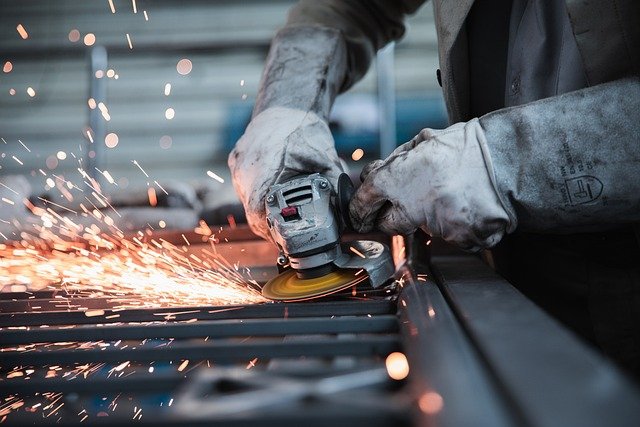Forging a Future: Exploring Careers in Metal Welding
Discover the diverse world of welding careers, from construction sites to aerospace engineering. This guide illuminates the skills, tools, and opportunities awaiting those drawn to the art of metal fusion. Whether you're a seasoned professional or considering a career shift, uncover the potential of this dynamic field and how it shapes our modern world.

The realm of welding encompasses a wide array of specializations, each offering unique challenges and rewards. Let’s explore some of the key areas where welding professionals make their mark:
Building the World Around Us Construction welders are the unsung heroes of our cityscapes. These skilled artisans brave the elements, often working at dizzying heights, to bring architectural visions to life. Their expertise is crucial in erecting skyscrapers, bridges, and the very infrastructure that supports our daily lives.
Keeping Resources Flowing Pipeline welders play a vital role in energy and water distribution. Their work often takes them to remote locations, where they must adapt to challenging environments. These specialists ensure the safe and efficient transport of essential resources across vast distances.
Beneath the Waves Underwater welding merges the worlds of diving and metalwork. These intrepid professionals operate in high-pressure environments—both literally and figuratively. Their work on offshore platforms, ship repairs, and subaquatic structures demands a unique blend of skills and nerves of steel.
Reaching for the Stars In the cutting-edge field of aerospace welding, precision is paramount. These welders work with exotic materials and employ advanced techniques to craft components that will soar through the skies and beyond our atmosphere.
Crafting a Successful Welding Career To thrive in the welding industry, one must cultivate a blend of technical prowess and personal attributes:
Technical Mastery: • Proficiency in diverse welding methods (e.g., MIG, TIG, Stick) • Blueprint interpretation and technical drawing comprehension • Understanding of metallurgical principles and material properties • Thorough knowledge of safety protocols and equipment operation
Personal Qualities: • Meticulous attention to detail • Physical resilience and manual dexterity • Analytical and problem-solving aptitude • Adaptability to various work environments
Typical qualifications include a high school diploma or equivalent, vocational training completion, and industry-recognized certifications, such as those offered by the American Welding Society (AWS).
The Welder’s Arsenal Welding professionals rely on an array of specialized tools and equipment:
- Welding Apparatus: From MIG and TIG to Stick welders, each type serves specific purposes.
- Protective Gear: Auto-darkening helmets, flame-resistant attire, specialized gloves, and reinforced footwear are non-negotiable.
- Material Preparation Tools: Plasma cutters, oxy-fuel torches, and grinding equipment for material shaping and weld finishing.
- Precision Instruments: Squares, levels, calipers, and markers ensure accuracy in measurements and positioning.
- Health Safeguards: Fume extraction systems protect welders from hazardous gases and particulates.
- Welding Supplies: Electrodes, filler metals, and shielding gases tailored to various welding processes.
Navigating the Welding Job Landscape The welding industry continues to offer stable employment prospects. The U.S. Bureau of Labor Statistics projects a modest 2% growth in welding-related occupations from 2021 to 2031. Several factors influence this outlook:
• Government infrastructure initiatives • Technological advancements in manufacturing • Demographic shifts as experienced welders retire • Emerging industries creating demand for specialized welding expertise
Career Prospects Across Sectors
| Sector | Outlook | Avg. Annual Salary (USD) |
|---|---|---|
| Manufacturing | Steady | $44,190 |
| Construction | Positive | $47,010 |
| Pipelines | Variable | $55,830 |
| Aerospace | Expanding | $65,270 |
| Underwater | Niche | $77,130 |
Note: Salary figures and projections are subject to change. It’s advisable to conduct up-to-date research before making career decisions.
Ascending the Welding Career Ladder Welding offers numerous avenues for professional growth:
- Quality Assurance: Transition to welding inspection roles, ensuring structural integrity and safety standards are met.
- Engineering Pathway: Further education can lead to welding engineering positions, focusing on process design and complex problem-solving.
- Knowledge Sharing: Experienced welders can become educators, training the next generation at vocational institutions or community colleges.
- Specialization: Developing expertise in niche areas like aerospace or underwater welding can lead to lucrative opportunities.
- Entrepreneurship: Some welders leverage their skills and industry knowledge to establish their own welding enterprises.
Continual learning and acquisition of advanced certifications are key to unlocking these career advancement opportunities.
Conclusion The welding profession offers a diverse spectrum of career paths across multiple industries. With dedication to skill development, ongoing training, and a passion for the craft, welding professionals can forge fulfilling careers that contribute significantly to our modern infrastructure and technological advancements. As materials science and welding technologies evolve, so too do the opportunities for growth and specialization in this essential field.
Note: This article is intended for informational purposes only and does not constitute job placement or employment opportunities. Individuals interested in pursuing a welding career should conduct thorough research and seek guidance from industry professionals or educational institutions.






